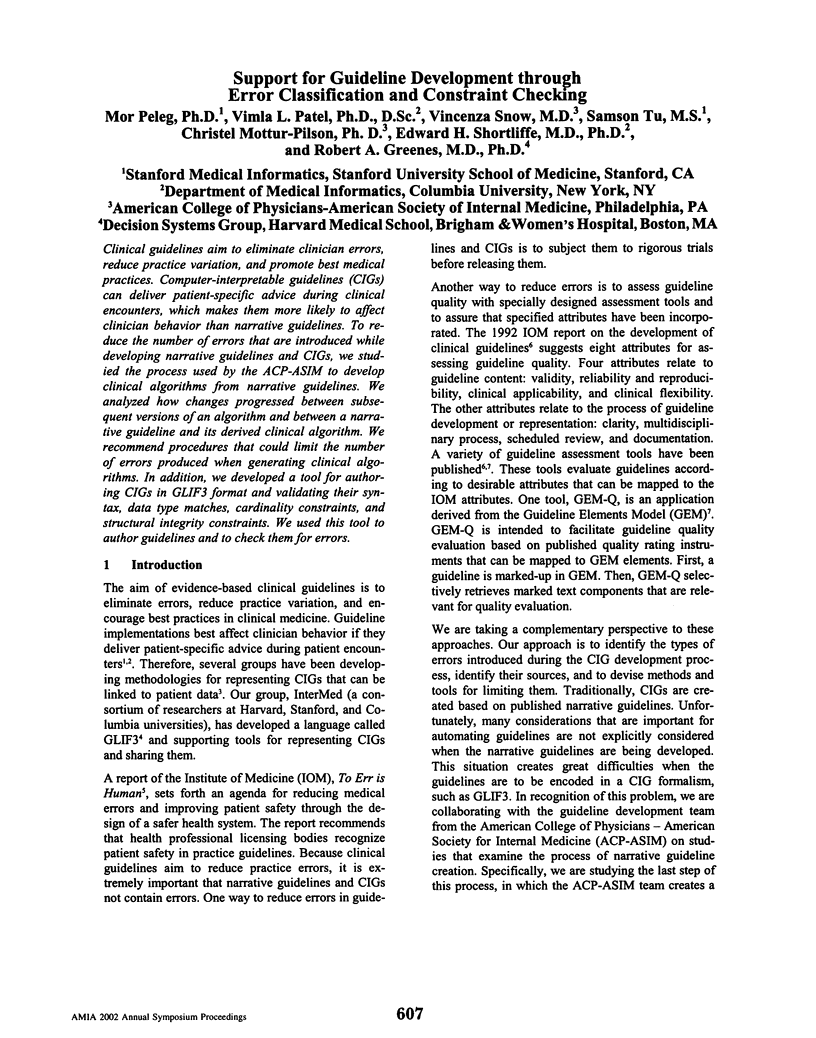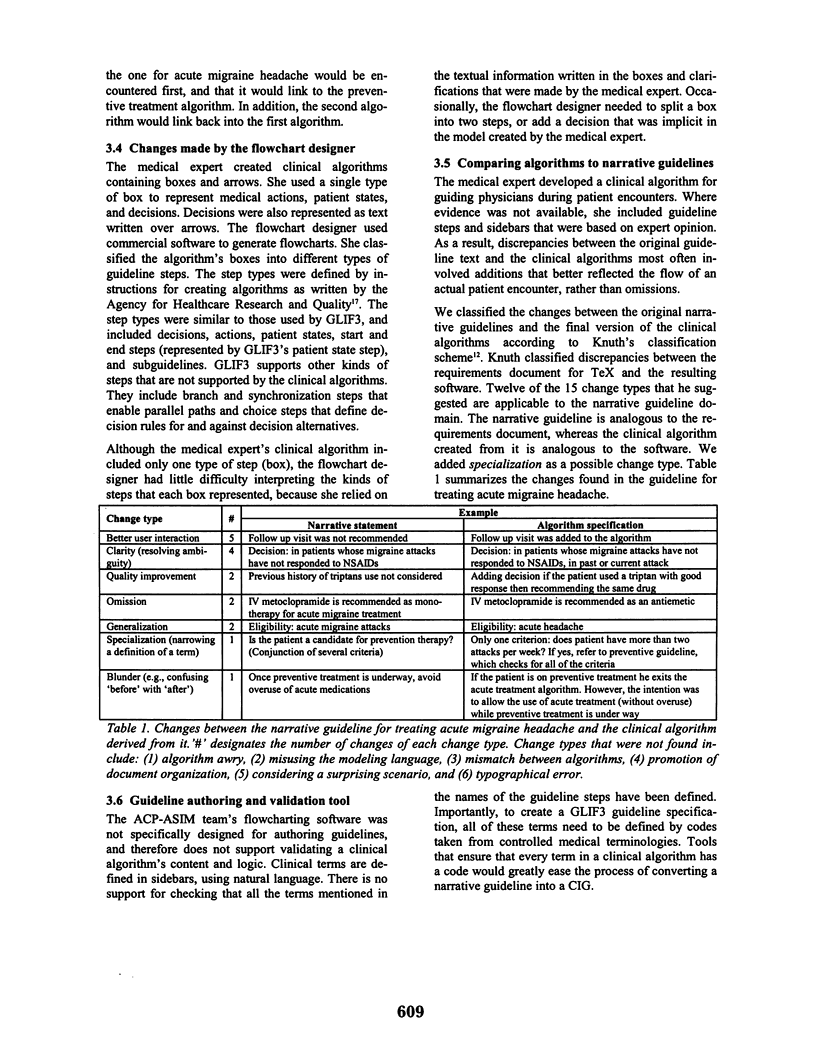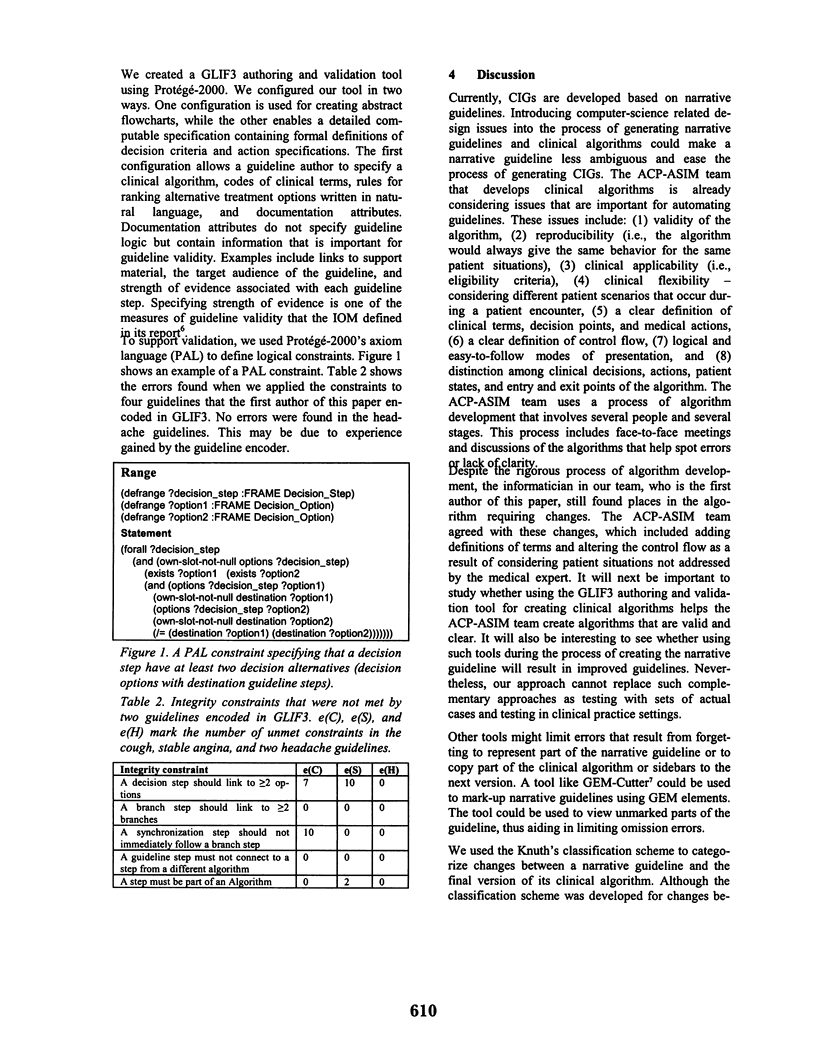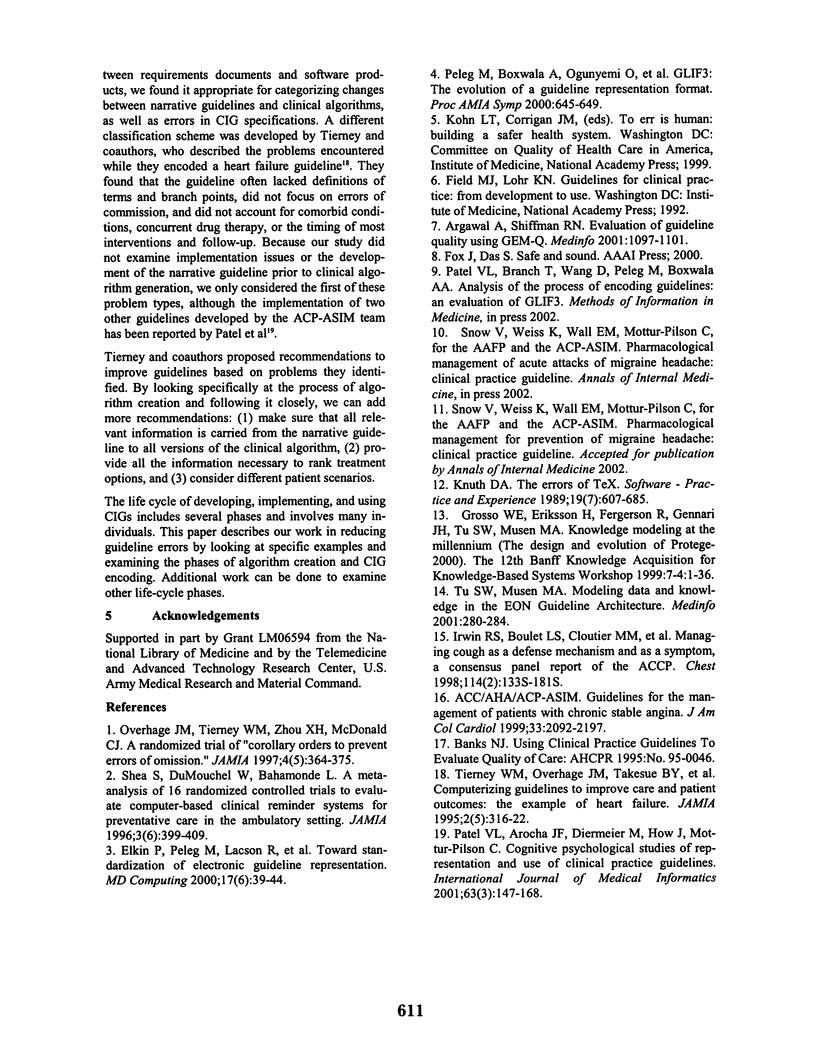Abstract
Clinical guidelines aim to eliminate clinician errors, reduce practice variation, and promote best medical practices. Computer-interpretable guidelines (CIGs) can deliver patient-specific advice during clinical encounters, which makes them more likely to affect clinician behavior than narrative guidelines. To reduce the number of errors that are introduced while developing narrative guidelines and CIGs, we studied the process used by the ACP-ASIM to develop clinical algorithms from narrative guidelines. We analyzed how changes progressed between subsequent versions of an algorithm and between a narrative guideline and its derived clinical algorithm. We recommend procedures that could limit the number of errors produced when generating clinical algorithms. In addition, we developed a tool for authoring CIGs in GLIF3 format and validating their syntax, data type matches, cardinality constraints, and structural integrity constraints. We used this tool to author guidelines and to check them for errors.
Full text
PDF




Selected References
These references are in PubMed. This may not be the complete list of references from this article.
- Agrawal A., Shiffman R. N. Evaluation of guideline quality using GEM-Q. Stud Health Technol Inform. 2001;84(Pt 2):1097–1101. [PubMed] [Google Scholar]
- Elkin P. L., Peleg M., Lacson R., Bernstam E., Tu S., Boxwala A., Greenes R., Shortliffe E. H. Toward the standardization of electronic guidelines. MD Comput. 2000 Nov-Dec;17(6):39–44. [PubMed] [Google Scholar]
- Irwin R. S., Boulet L. P., Cloutier M. M., Fuller R., Gold P. M., Hoffstein V., Ing A. J., McCool F. D., O'Byrne P., Poe R. H. Managing cough as a defense mechanism and as a symptom. A consensus panel report of the American College of Chest Physicians. Chest. 1998 Aug;114(2 Suppl MANAGING):133S–181S. doi: 10.1378/chest.114.2_supplement.133s. [DOI] [PubMed] [Google Scholar]
- Overhage J. M., Tierney W. M., Zhou X. H., McDonald C. J. A randomized trial of "corollary orders" to prevent errors of omission. J Am Med Inform Assoc. 1997 Sep-Oct;4(5):364–375. doi: 10.1136/jamia.1997.0040364. [DOI] [PMC free article] [PubMed] [Google Scholar]
- Patel V. L., Arocha J. F., Diermeier M., How J., Mottur-Pilson C. Cognitive psychological studies of representation and use of clinical practice guidelines. Int J Med Inform. 2001 Oct;63(3):147–167. doi: 10.1016/s1386-5056(01)00165-4. [DOI] [PubMed] [Google Scholar]
- Peleg M., Boxwala A. A., Ogunyemi O., Zeng Q., Tu S., Lacson R., Bernstam E., Ash N., Mork P., Ohno-Machado L. GLIF3: the evolution of a guideline representation format. Proc AMIA Symp. 2000:645–649. [PMC free article] [PubMed] [Google Scholar]
- Shea S., DuMouchel W., Bahamonde L. A meta-analysis of 16 randomized controlled trials to evaluate computer-based clinical reminder systems for preventive care in the ambulatory setting. J Am Med Inform Assoc. 1996 Nov-Dec;3(6):399–409. doi: 10.1136/jamia.1996.97084513. [DOI] [PMC free article] [PubMed] [Google Scholar]
- Tierney W. M., Overhage J. M., Takesue B. Y., Harris L. E., Murray M. D., Vargo D. L., McDonald C. J. Computerizing guidelines to improve care and patient outcomes: the example of heart failure. J Am Med Inform Assoc. 1995 Sep-Oct;2(5):316–322. doi: 10.1136/jamia.1995.96073834. [DOI] [PMC free article] [PubMed] [Google Scholar]
- Tu S. W., Musen M. A. Modeling data and knowledge in the EON guideline architecture. Stud Health Technol Inform. 2001;84(Pt 1):280–284. [PubMed] [Google Scholar]


